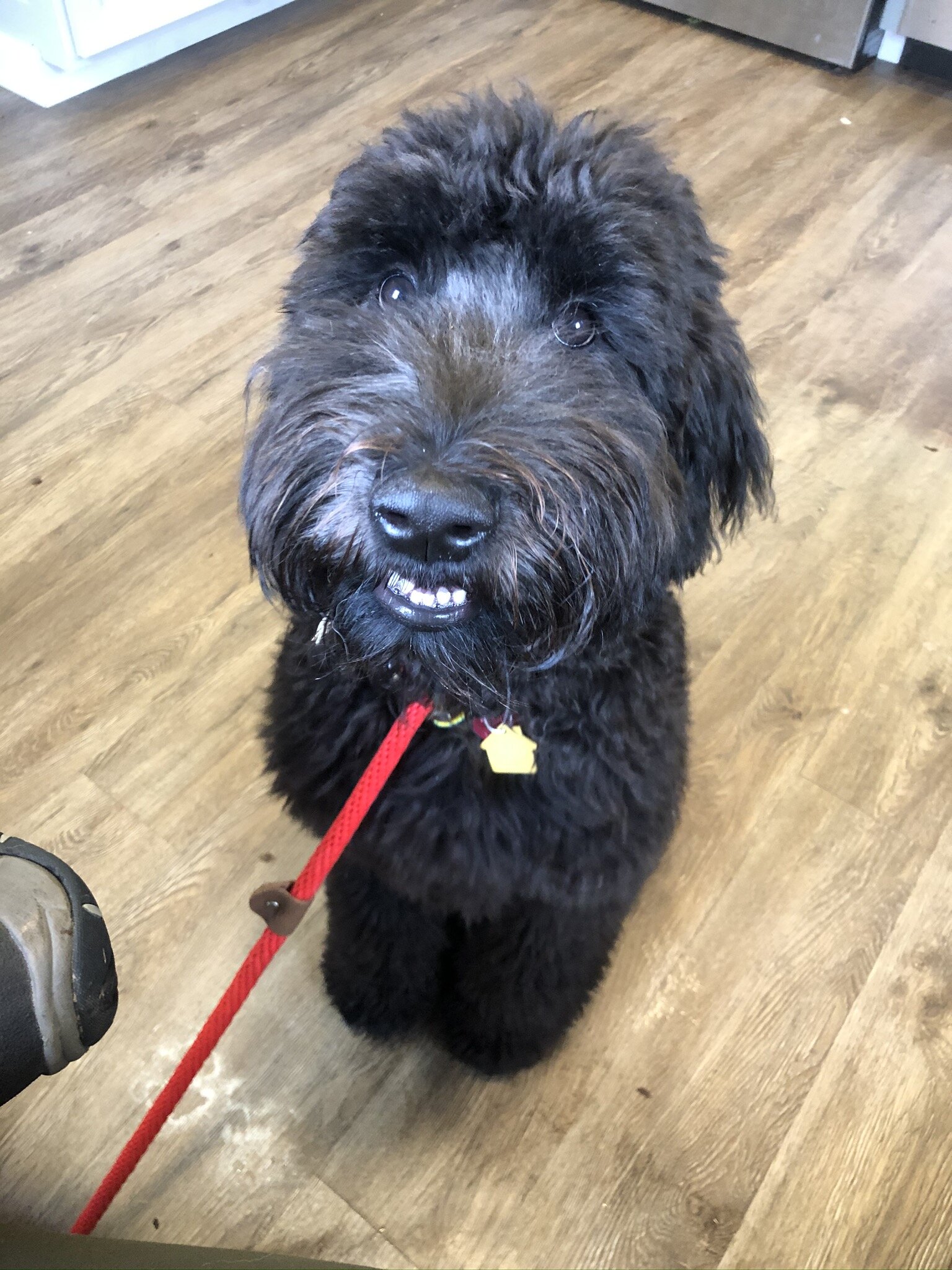Capturing: The Low Effort Way To Shape Better Behaviors Around the House
Yesterday, I welcomed a brand new Board & Train named Scotty. An under 1-yo whoodle, Scotty came in with run of the mill annoying puppyish behaviors like jumping, whining, and not coming when called. No major behavioral issues, but he was growing into a bigger body and even his innocent wildness was becoming stressful for the family to manage with three children. Recently, Scotty had learned an extremely effective way to get his owner to play with him: pick up something he shouldn’t have, like a sock or shoe, and run away with it. It never failed to result in a game of chase and his owner’s undivided attention. Problem was, his owner didn’t have as much fun with this game as he did.
In short, an “out” command was in order. An “out” command will give Scotty’s owner a way to keep him safe from picking up things he shouldn’t, and it also gives them a way to play fetch and drain his energy on bad weather days. We train “out” to mean “drop it and disengage,” and it is a really useful command to have in your arsenal during those “oh crap” moments. I have had clients whose dogs habitually absconded with dirty diapers, so I don’t mean that figuratively. How nice it would be to not have to pry THAT out of your dog’s mouth!
There are many ways to train this command, but with Scotty I was pretty sure I could simply “capture” the behavior and add a cue later. This means that I would wait for Scotty to decide to drop it, then mark & reward the choice. Capturing is a useful technique that can very quickly create solid behaviors without any pressure or coercion. When you capture a behavior, it means that the behavior was offered by the dog without prompting. This can be really, really helpful for all dogs, but especially those who might be described as “stubborn” and “willful.” Oftentimes dogs and owners have built up some level of conflict and resistance in the relationship, so capturing natural behaviors is a way to take the pressure off both of them. It allows the dog to think the good behavior was his/her own idea, and it helps the owner get better at marking discrete behaviors to increase the likelihood of their recurrence.
I will often make my private lesson clients do this for the entire first week in training. I tell them: “Just sit around in the evenings and watch what your dog does. The only thing you are allowed to say is “good” when he does something you like.” Even the craziest dogs eventually choose to lie down. As the dog learns there is a payoff to choosing Behavior A over Behavior B, the dog begins to prefer Behavior A.
I will give you a brief description of how our first 30 minutes in the house went with Scotty, and how I started getting him to drop things. First, we walked inside and Scotty immediately picked a toy up off the floor. We try to keep the fun stuff picked up so that we can build human relevance, but we are not perfect and toys sometimes get left on the floor. Oh well. The first thing I made sure to do is not make a fuss. I didn’t want to give him any reason to believe I was going to take it. Tugging an item out of your dog’s mouth IS a reward, and it sends the message that you want to play. And I want to build that toy drive, as toys are a great way to bond with your dog. So I completely ignored him and sat down with him tethered to me by leash.
The leash is quite important here. You can’t capture behaviors you don’t see, basically, and young exuberant dogs tend to run through the house roughshod. You need to keep your dog with you.
He messed around with the toy for about 3 minutes and eventually dropped it. At the moment he dropped it, I said good and gave him a treat. He got excited and picked the toy up again. Within 30 seconds, he dropped it, I said “good”, and gave him a treat. We repeated this process several times more until eventually, Scotty was picking up the toy for a second, immediately dropping it and looking to me for a treat. At this point, the dog clearly understands that dropping the toy results in a tangible reward.
Eventually, the toy was old news and he became disinterested in it. He sat. I said “good” and gave him a treat. He got excited. He sat again. I said “good” and gave him a treat. After a while, he laid down. I said “good” and gave him a treat. So we successfully captured three different behavior in the span of 30 minutes. All with me sitting down at the kitchen table.
You can do this with your dog. It is free or very cheap depending on what kind of food you use. You can use treats, bits of meat, or the dog’s daily ration. Make sure to keep that leash on when you first start. See what kinds of behaviors you can capture, and have fun with it!

